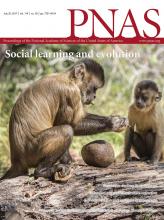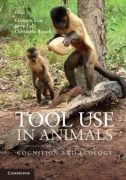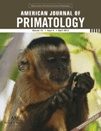Izar, P., Peternelli-dos-Santos, L., Rothman, J.M., Raubenheimer, D., Presotto, A., Gort, G., Visalberghi, E., Fragaszy, D. M. (2022), Stone tools improve diet quality in wild monkeys. (accepted) Current Biology. DOI:10.1016/j.cub.2022.07.056
Chalk-Wilayto, J., Fogaça, M.D., Wright,B.W., van Casteren, A., Fragaszy, D.M., Izar, P. Visalberghi, E., Strait, D.S., Ross, C.F., Wright, K.A., Laird, M.F. (2022) Effects of food material properties and embedded status on food processing efficiency in bearded capuchins. American Journal of Biological Anthropology, 178:617-635. DOI: 10.1002/ajpa.24561
Laird, M. F., Punjani, Z., Oshay, R. R. Wright, B.W., Fogaça, M. D. van Casteren, A., Izar, P., Visalberghi, E., Fragazy, D., Strait, D. S., Ross, C. F., Wright K.A. (2022) Feeding postural behaviors and food geometric and material properties in bearded capuchin monkeys (Sapajus libidinosus). American Journal of Biological Anthropology, 178: 1-14. DOI: 10.1002/ajpa.24501
Mangalam, M., Ross, C. F., Izar, P. Visalberghi, E., Fragaszy, D. M. (2022) How capuchin monkeys use their semi-prehensile tail. Current Science, 122: 195-200.
Presotto A., Remillard C., Howard A., Padgett-Vasquez S., Spagnoletti N., Verderane M., Madden M., Jordan T., Fragaszy D., Visalberghi E., Izar P. (2020). Capuchin (Sapajus libidinosus) Tool-Use Culture is Threatened by Land use Changes in Northeastern Brazil. International Journal of Primatology, https://doi.org/10.1007/s10764-020-00166-3
Resende, B., Ballesteros-Ardilla, A., Fragaszy, D., Visalberghi, E., & Izar, P. (2021). Revisiting the fourth dimension of tool use: how objects become tools for capuchin monkeys. Evolutionary Human Sciences, 3, e18. DOI:10.1017/ehs.2021.16
Visalberghi, E., Barca, V., Izar, P., Fragaszy. D., Truppa, V. (2021) Optional tool use. The case of wild bearded capuchins (Sapajus libidinosus) cracking cashew nuts by biting or by using percussors. American Journal of Primatology, 83 (1), e23221. DOI: https://doi.org/10.1002/ajp.23221
Truppa, V., Sabbatini G., Izar, P.,. Fragaszy, D. M., Visalberghi, E., (2021) Anticipating future actions: Motor planning improves with age in wild bearded capuchin monkeys (Sapajus libidinosus). Developmental Science, 24:e13077 DOI: 10.1111/desc.13077
Laird, M. F., Wright, B. W., Rivera, A. O., Fogaça, M. D., van Casteren, A., Fragaszy, D. M., Izar, P., Visalberghi, E., Scott, R. S., Strait, D. S., Ross, C. F., & Wright, K. A. (2020). Ingestive behaviors in bearded capuchins (Sapajus libidinosus). Scientific Reports, 10, 20850. DOI: 10.1038/s41598-020-77797-2
Fragaszy, D. M., Barton, S. A., Keo, S., Patel, R., Izar, P., Visalberghi, E., & Haslam, M. (2020). Adult and juvenile bearded capuchin monkeys handle stone hammers differently during nut-craching. American Journal of Primatology, 82, 7. DOI:10.1002/ajp.23156
Jones, C. E., & Fragaszy, D. M. (2020). Compound grips in tufted capuchin monkeys (Sapajus spp and Sapajus libidinosus). American Journal of Primatology, 82, 6. DOI:10.1002/ajp.23133
Verderane, M. P., Aguiar, R. M., & Izar, P. (2019). Face-to-face interactions between mothers and female infants in wild bearded capuchin monkeys (Sapajus libidinosus). Developmental Psychobiology, 62, 7. DOI:10.1002/dev.21948
Truppa, V., Marino, L. A., Izar, P., Fragaszy, D. M., Visalberghi, E. (2019). Manual skills for processing plant underground storage organs by wild bearded capuchins. American Journal of Physical Anthropology, 170, 1. DOI:10.1002/ajpa.23893
Fragaszy, D. M., Morrow, K., Baldree, R., Unholz, E., Izar, P., Visalberghi, E., & Haslam, M. (2019). How bearded capuchin monkeys (Sapajus libidinosus) prepare to use a stone to crack nuts. American Journal of Primatology, 81, 3. DOI:10.1002/ajp.22958
Wright, K. A., Biondi, L., Visalberghi, E., Ma, Z., Izar, P., & Fragaszy, D. M. (2019). Positional behavior and substrate use in wild adult bearded capuchin monkeys (Sapajus libidinosus). American Journal of Primatology, 81, e23067. DOI: 10.1002/ajp.23067
Ballesteros-Ardilla, A., & Resende, B. (2019). Reuse and Scrounging: Ecological niche influences on emergence of nutcracking tool use in capuchin monkeys (Sapajus libidinosus). PhD Thesis, Institute of Psychology, University of São Paulo, São Paulo.
Mangalam, M., & Fragaszy, D. M. (2018). The biomehanics of multi-joint posture and movement control in wild bearded capuchin monkeys using stone hammers. PhD Thesis, University of Georgia.
Mangalam, M., Pacheco, M. M., Izar, P., Visalberghi, E., & Fragaszy, D. M. (2018). Unique perceptuomotor control of stone hammers in wild monkeys. Biology Letters, 14, 20170587. DOI: 10.1098/rsbl.2017.0587
Howard, A., Mainali, K., Fagan, W., Visalberghi, E., Izar, P., Jones, C., & Fragaszy, D. 2018. Foraging and inter-individual distances of bearded capuchin monkeys. American Journal of Primatology, 80, 8. DOI: 10.1002/ajp.22900
Mangalam, M., Rein, R., Fragaszy, D. M. 2018. Bearded capuchin monkeys use joint synergies to stabilize the hammer trajectory while cracking nuts in bipedal stance. Proceedings of the Royal Society B, 285, 20181797. DOI: 10.1098/rspb.2018.1797
Visalberghi, E., Albani, A., & Rapisarda, E. (2017). Insights from documentarians. In V. Luna da Silva, R. Gonçalves Ferreira & M. A. B. de Oliveira (Eds.), A Primatologia no Brasil, vol. 14 (pp. 519-526). Retrieved from http://www.loja.edufpe.com.br/portal/spring/livro
Fragaszy, D., Eshchar, Y., Visalberghi, E., Resende, B., Laity, K., & Izar, P. (2017). Synchronized practice helps bearded capuchin monkeys learn to extend attention while learning a tradition. PNAS. [Epub ahead of print]. doi: 10.1073/pnas.1621071114.
Mangalam, M. Fragaszy, D. M. Newell, K. M., & Visalberghi, E. Stone-tool use in wild monkeys: implications for the study of the body-plus-tool system. Ecological Psychology, 29(4), 300-316. doi: 10.1080/10407413.2017.1369852
Haslam, M., Hernandez-aguilar, R. A., Proffitt, T., Arroyo, A., Falótico, T., Fragaszy, D., Gumert, M., Harris, J. W. K., Huffman, A., Kalan, A. K., Malaivijitnond, S., Matsuzawa, T., McGrew, W., Ottoni, E. B., Pascual-Garrrido, A., Piel, A., Pruetz, J., Schuppli, C., Stewart, F., Tan, A., Visalberghi, E., & Luncz, L. V. (2017). Primate archaeology evolves. Nature Ecology & Evolution, 1, 1431-1437. doi: 10.1038/s41559-017-0286-4
Visalberghi, E., Di Bernardi, C., Marino, L. A., Fragaszy, D., & Izar, P. (2017). Female bearded capuchin monkeys (Sapajus libidinosus) use objects to solicit the sexual partner. Journal of Comparative Psychology, 131(3), 207-213. http://dx.doi.org/10.1037/com0000072
Mangalam, M., & Fragaszy, D. M. (2016). Transforming the body-only system into the body-plus-tool system. Animal Behaviour, 177, 115-122. doi:10.1016/j.anbehav.2016.04.016
Liu, Q., Fragaszy, D. M., & Visalberghi, E. (2016). Wild capuchin monkeys spontaneously adjust actions when using hammer stones of different mass to crack nuts of different resistance. American Journal of Physical Anthropology, 161, 53-61. doi: 10.1002/ajpa.23006
Spagnoletti, N., Cardoso, T. C. M., Fragaszy, D., & Izar, P. (2016). Coexistence between humans and Capuchins, (Sapajus libidinosus): comparing observational data with farmers´perceptions of crop losses. International Journal of Primatology. Advance online publication. doi:10.1007/s10764-016-9926-9
Fragaszy, D., Izar, P., Liu, Q., Eshchar, Y., Young, L. A., Visalberghi, E. (2016). Body Mass in Wild Bearded Capuchins, (Sapajus libidinosus): Ontogeny and Sexual Dimorphism. American Journal of Primatology, 78, 473-484. doi: 10.1002/ajp.22509
Massaro, L., Massa, F., Simpson, K., Fragaszy, D., Visalberghi, E. (2016). The strategic role of the tail in maintaining balance while carrying a load bipedally in wild capuchins(Sapajus libidinosus): a pilot study. Primates, 57, 231-239. doi: 10.1007/s10329-015-0507-x
Visalberghi, E., Albani, A., Ventricelli, M., Izar, P., Schino, G., Fragaszy, D. (2016). Factors affecting cashew processing by wild bearded capuchin monkeys (Sapajus libidinosus, Kerr 1792). American Journal of Primatology, 78, 799-815. doi: 10.1002/ajp.22545
Mangalam, M., Izar, P., Visalberghi, E., Fragaszy, D. (2016). Task-specific temporal organization of percussive movements in wild bearded capuchin monkeys. Animal Behaviour, 114, 129-137. doi: 10.1016/j.anbehav.2016.01.011
Eshchar, Y. Izar, P., Visalberghi, E., Resende, B., Fragaszy, D. (2016). When and where to practice: social influences on the development of nut-cracking in bearded capuchins (Sapajus libidinosus). Animal Cognition, 1-17. doi: 10.1007/s10071-016-0965-6
Visalberghi, E., Cavallero, S., Fragaszy, D. M., Izar, P., Aguiar, R. M., & Truppa, V. (2015). Making use of capuchins' behavioral propensities to obtain hair samples for DNA analyses. Neotropical Primates, 22(2), 89-93.
Visalberghi, E., Sirianni, G., Fragaszy, D., Boesch, C. (2015). Percussive tool use by Taï Western chimpanzee and Fazenda Boa Vista bearded capuchin monkeys: a comparison. Philos Trans R Soc Lon B Biol Sci, 370(1682), 1-15. doi:10.1098/rstb.2014.0351
la Torre, I. & Hirata, S (orgs.) (2015). Percussive technology in human evolution: a comparative approach in fossil and living primates. Philos Trans R Soc Lon B Biol Sci (cover).
Mangalam, M. & Fragaszy, D. M. (2015). Wild bearded capuchin monkeys crack nuts dexterously. Current Biology, 25(10), 1334-39. doi:10.1016/j.cub.2015.03.035
Wright, K. A., Wright, B. W., Ford, S. M., Fragaszy, D., Izar, P., Norconk, M., Hobbs, D. G., Alfaro, M. E., Lynch Alfaro, J. W. (2015). The effects of ecology and evolutionary history on robust capuchin morphological diversity. Mol Phylogenet Evol, 82(B), 455-466. doi:10.1016/j.ympev.2014.08.009
Mendonça-Furtado, O., Edaes, M., Palme, R., Rodrigues, A., Siqueira, J., Izar, P. (2014). Does hierarchy stability influence testosterone and cortisol levels of bearded capuchin monkeys (Sapajus libidinosus) adult males? A comparrison between two wild groups. Behavioural Processes, 109(A), 79-88. doi:10.1016/j.beproc.2014.09.010
Koops, K., Visalberghi, E. & van Schaik, C. P. (2014). The ecology of primate material culture. Biol. Lett. 10(11), 20140508. doi:10.1098/rsbl.2014.0508
Visalberghi, E. & Fragaszy, D.M. (2013). The Etho-Cebus Project: Stone-tool use by wild capuchins monkeys. In: Tool use in animals: Cognition and Ecology eds. Sanz, C. Call, J. & Boesch, C. Cambridge University Press.
Barca, V., Alleva, E. & Visalberghi, E. (2013). Strategie Per L'apertura Delle Noci Di Anacardo In Una Popolazione Selvatica Di Cebi Barbuti. PhD Thesis, Universitá Di Scienze Matematiche Fisiche e Naturali, Universitá Di Roma "Sapienza".
Haslam, M., Cardoso, R. M., Visalberghi, E. & Fragaszy, D. (2014). Stone anvil damage by wild bearded Capuchins (Sapajus libidinosus) during pounding tool use: a field experiment. PLOS ONE, 9(11), e111273. doi:10.1371/journal.pone0111273
Visalberghi, E. & Adessi E (2013). Selectivity in stone tool use by wild bearded capuchin monkeys. Nova Acta Leopoldina NF, 111(380),191-204.
Borgo S, Spagnoletti N, Vieu L & Visalberghi E (2013). Artifact and artifact categorization: comparing humans and capuchin monkeys. Rev. Phil. Psych., 4, 375-389. doi:10.1007/s13164-013-0144-5
Visalberghi E, Haslam M, Spagnoletti N & Fragaszy D (2013). Use of stone hammer tools and anvils by bearded capuchin monkeys over time and space: construction of an archeological record of tool use. Journal of Archaeological Science, 40, 3222-e3232. doi:10.1016/j.jas.2013.03.021
Verderane MP, Izar P, Visalberghi E & Fragaszy DM (2013). Socioecology of wild bearded capuchin monkeys (Sapajus libidinosus): an analysis of social relationships among female primates that use tools in feeding. Behaviour, 150, 659-689.
Fragaszy DM, Liu Q, Wright BW, Allen A, Brown CW & Visalberghi E (2013). Wild bearded capuchin monkeys (Sapajus libidinosus) strategically place nuts in a stable position during nut-cracking. PLoSOne 8, e56182-e56182.
Duarte M, Hanna J, Sanches E, Liu Q & Fragaszy D (2012).Kinematics of bipedal locomotion while carrying a load in the arms in bearded capuchin monkeys (Sapajus libidinosus). Journal of Human Evolution, 63, 851-858.
Massaro L, Liu Q, Visalberghi E & Fragaszy D (2012). Wild bearded capuchin (Sapajus libidinosus) select hammer tools on the basis of both stone mass and distance from the anvil. Anim Cogn, 15, 1065–1074.
Fragaszy DM (2012). Community resources for learning: how capuchin monkeys construct technical traditions. Biol. Theory, 6, 231-240.
Spagnoletti N, Visalberghi E, Verderane M, Ottoni EB,Izar P &Fragaszy D (2012). Stone tool use in wild bearded capuchin monkeys, Cebus libidinosus. Is it a strategy to overcome food scarcity?. Animal Behaviour, 83, 1285-1294.
Izar P, Verderane M, Peternelli L, Furtado O, Presotto A, Tokuda M, Visalberghi E & Fragaszy D (2011). Flexible and Conservative Features of Social Systems in Tufted Capuchin Monkeys: Comparing the Socioecology of Sapajus libidinosus and Sapajus nigritus. Am. J. of Primatology, 73, 1–17.
Spagnoletti, N, Visalberghi E, Ottoni, E,Izar P &Fragaszy D (2011). Stone tool use by adult wild bearded capuchin monkeys (Cebus libidinosus). Frequency, efficiency and tool selectivity. Journal of Human Evolution, 61, 97-107.
Liu Q, Fragaszy D, Wright B, Wright K, Izar P & Visalberghi E (2011). Wild bearded capuchin monkeys (Cebus libidinosus) place nuts in anvils selectively. Animal Behaviour, 81, 297-305.
Fragaszy DM, Greenberg R, Visalberghi E, Ottoni EB, Izar P & Liu Q (2010). How wild bearded capuchin monkeys select stones and nuts to minimize the number of strikes per nut cracked. Animal Behaviour, 80, 205-214.
Visalberghi E, Fragaszy D, Izar P, Ottoni EB (2005). Terrestriality and tool use. Science, 318, 951.
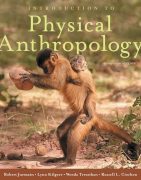
Noemi Spagnoletti's cover photo: Physical Anthropology, Jurmain et. al. (2009)
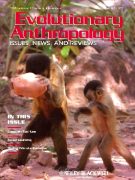
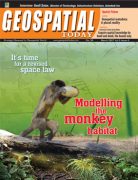
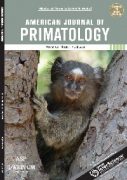
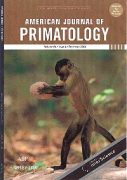
Eshchar, Y. (2015). Social influences on young bearded capuchin monkeys learning to use stone tools to crack nuts. (Doctoral Dissertation). University of Georgia, USA.
Di Bernardi, C. (2015). Descrizione del corteggiamento e del comportamento sessuale del cebo barbuto in natura attraverso l`analisi di videoregistrazioni. facoltà do Scienze Matematiche, Fisiche e Naturali, Laurea Triennale in Scienze Biologiche. Tesi triennale.
Howard, A. (2014). Navigation by wild bearded capuchin monkeys: agent-based models of rout choice. (Doctoral Dissertation). University of Georgia, USA.
Albani, A. (2013). Processing dei frutti di anacardo (Anacardium spp.) da parte di una popolazione selvatica di cebi (Sapajus libidinosus) nel Nord Est del Brasile. Università degli Studi Roma Tre. Facoltà di Scienze Matematiche, Fisiche e Naturali, Laurea Triennale in Scienze Biologiche.
Liu, Q. (2011). Skillful nut-cracking in wild capuchin monkeys: studies in perception and action. (Doctoral Dissertation). University of Georgia, USA.
Sirianni, G. (2009). Processamento del cibo in una popolazione di Cebus libidinosus (Spix,1823). (Master's thesis), University of Rome "La Sapienza", Italy.
Pickering, T. (2007). Measuring proficiency of palm nut (Attalea sp.) cracking in wild bearded capuchin monkeys (Cebus libidinosus). (Bachelor's thesis). University of Georgia, USA.
Mantovani, L. (2007). Indagine sulle incudini e i martelli utilizzati da Cebus libidinosus a Boa Vista (Piauì, Brasile). (Master's thesis). University of Milan, Italy.
Cisco, E. (2006). Analisi del comportamento di uso di strumenti per la rottura di noci in una popolazione di Cebus libidinosus in natura. (Master's thesis). University of Rome "La Sapienza", Italy.
Hinley, A. J. (2006). GIS-based habitat modelling related to bearded capuchin monkey tool use. (Master's thesis), University of Georgia, USA.



